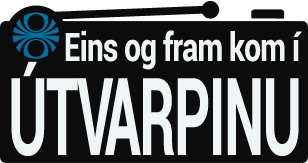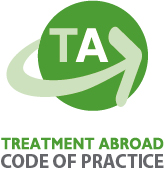The phelloderm is a thin layer of parenchyma cells (living) that forms within each of the several cork cambia. B. many chloroplasts. E. is produced by the cork cambium. B. Parenchyma 1.9 ). D It is an internal water-proofed layer that prevents water and minerals from moving through intercellular . B. tracheids. What Is the Difference between Hotel and Restaurant? The pericycle does not give rise to the branch roots however, instead it widens as they are propelled towards the exterior. Difference # Phelloderm: 1. In a few plants, the phellogen arises in the epidermal cells (Nerium, Pyrus). What Is the Difference between Fabaceae, Solanaceae, and Liliaceae? B. consists of one year's growth of xylem and phloem. Difference between Primary and Secondary Meristem, BotanyZoologyBiochemistryCell & Molecular BiologyBiotechnologyBioinformaticsBiophysicsPlant PhysiologyPhysiology & EndocrinologyImmunologyMicrobiologyGeneticsEmbryologyEvolutionEcologyResearch MethodologyBiostatisticsPhysics for BiologistsChemistry for Biologists, (Similarities and Differences between Phellem and Phelloderm), During the secondary growth in both stem and root, the peripheral tissues like epidermis, hypodermis and cortex are replaced by a new secondary tissue called the Periderm (bark). What is the difference between phellem and phelloderm? Which of the following is not true about meristems? The LibreTexts libraries arePowered by NICE CXone Expertand are supported by the Department of Education Open Textbook Pilot Project, the UC Davis Office of the Provost, the UC Davis Library, the California State University Affordable Learning Solutions Program, and Merlot. Are your language skills up to the task of telling the difference? It can contain chlorophyll and function in defense. These are called annual rings (tree rings; Figure \(\PageIndex{9-10}\)) and can be used to determine the age of a tree or branch through the study of dendrochronology. The layer of tissue, often very thin, produced on the inside of the cork cambium in woody plants. Secondary growth in plants increases the girth (diameter) of woody plants. E. conducts food. E. Tracheary element. Which of these is not an example of one of these special functions? Phellogen, phelloderm, and phellem are collectively known as periderm. Even though the phellem (cork) and phelloderm (secondary cortex) are produced by the same meristematic tissue (phellogen), they show many differences. C. sieve tube members. By analysing the produced data, it was also possible to discover a novel molecule in R. tetraphylla, which shares the exact same mass as the chemotherapeutic drug, vincristine. One moose, two moose. D. vessel members. Publishers 1998, 2000, 2003, 2005, 2006, 2007, 2009, 2012. The cells are closely packed and they are mainly dead cells. Which of the following is not an evolutionary modification of leaves? D. are alternately arranged. A. Enter youre-mail address B. tracheids Periderm is the outer layer of certain plants. The cortex and the epidermis form at the time of primary growth. B. lateral meristems. The periderm is composed of the phellogen, the phelloderm (produced by the phellogen inwards) and the phellem (cork) present outward of the phellogen [ 1] ( Figure 2 j,k). The most distinctive characteristic of leaf mesophyll cells is that they are filled with A. central vacuoles. E. "A rhizome is a modified root that is able to grow leaves.". Furthermore, thick annual rings indicate wet years, and thin annual rings indicate dry years. D. veins. A. carrots They function in storage, producing secondary compounds (molecules used by the plant that are not essential parts of metabolism), and transporting materials between the xylem and phloem. A. help absorb oxygen B. 1. A. parenchyma tissue. C. defend against insects E. stomata. It replaces outer cortical layers and epidermal layers. It is the main tissue that conduct waters in most plants. British English and American English are only different when it comes to slang words. The initial cork cambium in the roots forms post modifications in the pericycle and the endodermis. Plant cells that give rise to two cells, one of which is free to differentiate into various kinds of cells that contribute to the plant body, are called, Cell division in the apical meristems at the tips of a plant that results in increases in height or length is called, Secondary growth of plants results from cell division in which type of meristem? spacesontheirwaytothevasculartissue. The phellogen tissue is responsible for producing phellem and phelloderm. Cork cambium: Cork cambium is the meristematic tissue found in the cortex region. You explain to her that the "root" she is planting is not a root, but instead is called a rhizome. Which of the following cell types is most efficient at conducting water horizontally in woody tissues? C. consists of one year's growth of xylem. Phelloderm is a layer of parenchyma produced by the cork cambium an inner secondary cortex of the cork cambium. 41. The cork cambium forms a major portion of the bark of woody plants. B. conducting A tissue produced inwardly by the cork cambium. The cylinders are cork cambium and vascular cambium. In other words a rhizome is a stem-root C. It is the portion of the root that contains numerous root hairs. A. C. vessel members D. sclerenchyma E. root hairs, 58. Recall that the original xylem and phloem that differentiated from the apical meristem's derivative cells are called the 1o (primary) xylem and 1o phloem. Primary growth occurs as a stem increases in length as a result of cell division in the shoot apical meristem. C. Apical meristems give rise to three types of embryonic tissues. It develops between the primary xylem and the primary phloem in dicots. D. collenchyma E. fiber, A major distinguishing feature between monocot and eudicot stems is the organization of the ____________ system. He claims that there were popping noises around him all night. Which of these is not a possible function of trichomes? The first cork cambium in a stem emerges from the parenchyma cells in the outermost layers of the cortex. Distinguish between softwood and hardwood. Match the following physical and chemical properties with the compounds ethane, C2H6\mathrm{C}_2 \mathrm{H}_6C2H6, or sodium bromide, NaBr\mathrm{NaBr}NaBr : D. parenchyma cells. Then the subsequent cork cambia emerges from the secondary phloem to the inside. Phelloderm: Phelloderm is the secondary cortex, produced by the phellogen towards the inner side. To save this word, you'll need to log in. Which type of stem does not produce a cork cambium? derm fe-l-drm : a layer of parenchyma produced inwardly by a phellogen Word History Etymology Greek phellos + International Scientific Vocabulary -derm First Known Use 1875, in the meaning defined above Time Traveler The first known use of phelloderm was in 1875 See more words from the same year xylem. The first phase of secondary growth in stems and roots is mainly focused on the epidermis, hypodermis, and cortex. A. Collenchyma The first cork cambium produced by a stem arises from the cortex, but subsequent cork cambia are produced by the parenchyma cells of the secondary phloem. 51. A method for supporting or managing bone health, cartilage health or both in a mammal, comprising administering an effective amount of a composition, wherein the composition co (fl-drm) The tissue produced on the inside of the cork cambium in woody plants. A. What Is a Phelloderm? They can be apical or lateral. E. The vessel diameters are larger. The cork cambium is involved in the production of cork a tough protective matter. Just below the lateral buds are leaf scars, where the leaves were formerly attached. D. helps push away soil particles as the root grows E. releases a slimy lubricant fluid, 46. We also acknowledge previous National Science Foundation support under grant numbers 1246120, 1525057, and 1413739. It contains elongated conducting cells. Herbaceous plants mostly undergo primary growth, with hardly any secondary growth or increase in thickness. Phelloderm is made of living cells. At the end of the secondary stem's first year of growth, the periderm replaces the epidermis, but the cortex and pith are retained. A. leaves. A. parenchyma In contrast to the phloem, old layers of secondary xylem are retained and are not easily crushed. Note: Both phellem and phelloderm are produced by the tissue phellogen and are the types of periderm and found in the cork cambium of the plants. The cork cambium produces phelloderm, a storage tissue, to the inside of the root and cork, a protective layer of dead, suberized cells, toward the outside. The phellem or the cork forms the exterior of the cork cambium. In stems the cortex is between the epidermis layer and the phloem, in roots the inner layer is not phloem but the pericycle . Phellem is produced by the phellogen tissue and it occurs towards the outside. D. collenchyma tissue. 2. B. the developing of the kernels of corn on the ears of the corn stalks." Even though the phellem (cork) and phelloderm (secondary cortex) are produced by the same meristematic tissue (phellogen), they show many differences. Distinguish between heartwood and sapwood. The inner bark is everything within the cork cambium. C. the expansion of the lateral meristems increasing the girth of the corn stalk." Early wood appears lighter and is less dense than late wood. The new xylem and phloem produced by the cambium are called 2o (secondary) xylem and 2o phloem. 12. Xylem rays tend to occupy a greater volume in hardwoods relative to softwoods. The cork cambium, unlike the vascular cambium, does not grow in diameter. Phelloderm or secondary cortex is produced on the inner side of phellogen. D. includes cortex and pith tissue. C. outside; middle D. shoot tip; roots E. middle; middle, 52. D. vascular cambium. Required fields are marked *. Place of origin of phellogen. B. Estimate the mass of the Earth's troposphere, the lowest portion of the Earth's atmosphere. C. phloem (primary and secondary). Functional secondary phloem E. ground. What structural features are produced by cork cambium? A. the endodermis in the root 8. B. store or secrete salt When in doubt download our app. 56. E. bark. It produces new dermal tissues which gradually replaces the epidermis which is formed by the protoderm. Where is periderm produced? C. It contains two types of cells, sieve cells and sieve tube members. Secondary growth or wood is noticeable in woody plants; it occurs in some eudicots, but occurs very rarely in monocots. E. It seals the surface of roots that have been damaged. E. Some of its cells contain clusters of pores. The secondary growth maintains two fundamental functions of the vascular tissue support and conduction. A friend who is not a biologist tells you that she grows irises from iris roots. - these two cambiums will give rise to the vascular cambium - as the plant enters secondary growth, a cylinder or secondary vascular tissue is produced - typically more secondary xylem is produced than secondary phloem - additionally, the primary phloem is pushed outwards to the outside of the plant as it continues to grow in diameter - the thin walls of its cells are crushed, destroying the . In an experiment, some herbaceous, nonwoody plants were exposed to frequent windy conditions or mechanical shaking for several hours per day. Trees and shrubs have active lateral 19. B. root hairs on the root epidermis C. sclerenchyma tissue. Phellogen divides by periclinal division and produced phellem or cork cells on the outside and phelloderm on the inner side. Stage 3: maturation of new rhytidome. What is the function of the Casparian strip in the root? A. rays E. irritate potential herbivores, John David Jackson, Patricia Meglich, Robert Mathis, Sean Valentine, David N. Shier, Jackie L. Butler, Ricki Lewis. The middle drawing is of the same stem later in the year. B. protoderm. Give one basic functional difference between phellogen and phelloderm. Phelloderm is produced by the phellogen and it occurs towards the inner side. B. cork cambium. These are replaced by the periderm in the plants which exhibit secondary growth. Produced by the phellogen towards the inner side. Copyright 2023. B. in roots. These transport large volumes of water, which is abundant due to spring rains. In the former case the formation of phelloderm is trivial in amount; in the latter, considerable, since this tissue has to replace the cast-off cortex, as a metabolic and particularly a storage tissue. 50 feet Privacy Policy. Root hairs grow actively in which area of the developing roots? By signing in, you agree to our Terms and Conditions The slender stalk that connects the flattened leaf blade to the stem in most dicots is the A. meristem. Pores or lenticels are absent in phelloderm. Two major types of phellem cells are identified in the periderm of jarrah seedlings, namely TnP and thick-walled phellem (TkP). Published by Houghton Mifflin Harcourt Publishing Company. Sometimes only a part of the phellogen is . The internal tissue formed by the phellogen is known as phelloderm, and consists usually of ordinary parenchyma. Every year or at times less frequently, a new cork cambium forms within the already existing older one which creates another layer of periderm in the old periderm. The term starch sheath is used for endodermis of, Bulliform,large sized ,vacuolate motor cells occur, A meristenatic region present between xylem and phloem of open vascular bundle is called, The vascular bundles in the stem are generally scattered in, Cambium is a lateral meristem that takes part in, Pteridophytes differ from mosses/bryophytes in possessing. Phelloderm is parenchymatous. { "11.01:_Stem_Morphology_(External_Structure)" : "property get [Map MindTouch.Deki.Logic.ExtensionProcessorQueryProvider+<>c__DisplayClass228_0.
phelloderm is produced by
Posted in james patterson smith 2020 release date












































